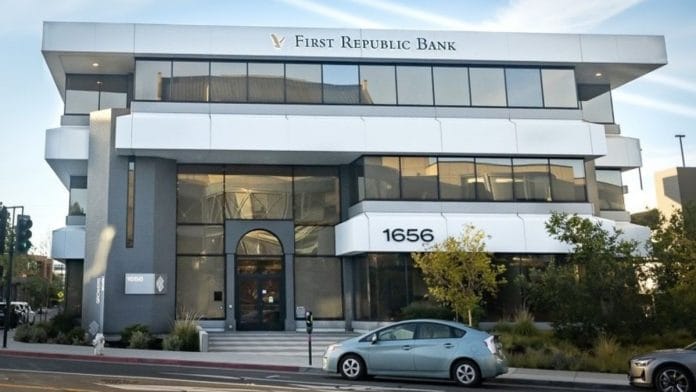New Delhi: In yet another blow to the US banking sector, American regulators have taken over the First Republic Bank and have accepted a bid by JPMorgan Chase Bank to take over the deposits and assets of the ailing bank. This marks the failure of the second major bank in the US within the span of two months.
The US Department of Financial Protection and Innovation (DFPI) Monday announced its decision, putting an end to the First Republic Bank, which had been established in 1985.
“The DFPI appointed the Federal Deposit Insurance Corporation (FDIC) as receiver of First Republic Bank,” the DFPI said in a statement. “The FDIC has accepted a bid from JPMorgan Chase Bank, National Association, Columbus, Ohio, to assume all deposits, including all uninsured deposits, and substantially all assets of First Republic Bank.”
The fall of First Republic Bank comes close on the heels of the collapse of Silicon Valley Bank (SVB) in March 2023, and has happened for largely the same reasons. The root of the problems with these banks were the interest rate hikes implemented by the US central bank, the Federal Reserve (US Fed), over the last year or so.
Since early 2022, the US Fed has implemented a cumulative 475 basis points of interest rate hikes to combat spiraling inflation. Several banks in the US, including SVB and First Republic Bank, had invested heavily in bonds when interest rates were low.
However, the rapid increase in interest rates meant that these bond holdings greatly fell in value, leading to losses for the banks looking to sell them in times of recent distress. The crisis of confidence that took place in the run up to the collapse of SVB and some other banks in the US in March led to depositors pulling out their funds from other banks as well, including First Republic Bank.
Major American banks rallied at the time to re-instill confidence in the banking industry. A group of financial institutions — including Bank of America, Wells Fargo, Citigroup, and JPMorgan Chase — together agreed in March to deposit $30 billion in First Republic to shore up its deposit base.
“This action by America’s largest banks reflects their confidence in First Republic and in banks of all sizes, and it demonstrates their overall commitment to helping banks serve their customers and communities,” the consortium said in a statement at the time.
This was not enough. With investor and depositor confidence in First Republic plummeting, the bank’s stock closed 43 per cent down Friday and hit a record low of $2.99.
Finally, US regulators had to step in and take control of First Republic Bank in order to protect depositors.
Also read: Spying, cocaine, money-laundering, historic losses: The sordid tale of the fall of Credit Suisse
Indian banks well prepared
Reserve Bank of India (RBI) Governor Shaktikanta Das on 27 April had made several reassuring statements about the health and resilience of the Indian banking sector. Although, he was speaking before the latest developments on First Republic Bank.
“The Reserve Bank has also put in place various prudential regulatory frameworks,” Das said, while speaking at the Global Conference on Financial Resilience organised by the College of Supervisors in Mumbai. “These include capital adequacy requirements, asset classification and provisioning requirements, dividend distribution framework and liquidity management framework.”
“In addition, the Reserve Bank also periodically deploys macroprudential measures to address system level build-up of risks,” he added. “As a consequence of the measures taken by both the Reserve Bank and the banks themselves, the Indian banking system has remained resilient and has not been affected adversely by the recent sparks of financial instability seen in some advanced economies.”
The Governor further said that the resilience of the Indian banking sector can be seen in recent stress tests that have been conducted as well.
(Edited by Zinnia Ray Chaudhuri)
Also read: Indian policymaking is good when cautious, botched when rushed. Learn from US banking crisis






